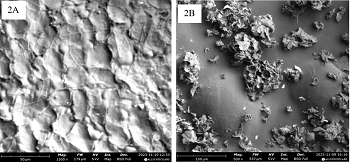Vol 6 No 1 (2025)
Research Article
Oil spill can be extremely hazardous and environmentally threatening, and therefore needs to be contained and cleaned up as soon as possible. These serious environmental consequences have long been recognized and considerable research and technological development has been carried out to develop appropriate remediation techniques. Most of the sorbents in use for cleanup technologies are synthetic, non-biodegradable and imported. There is need to develop natural sorbents which are biodegradable, cost effective and readily available in line with agricultural wastes Luffa aegyptiaca sponge were functionalized by acetylation to increase their hydrophobic properties and oil sorption capacities. Structural modification from acetylation of Luffa aegyptiaca sponge was analyzed using Fourier Transform Infrared Spectroscopy (FTIR). The effect of time and catalysts (KBr and KI) on the acetylation process was examined to optimize conditions. Sorption behaviours was studied using kinetic models, including first, Hill second, Pseudo-second and Intra-particle diffusion models. Isotherm models such as Langmuir, Freundlich and Temkin isotherm model were also used to analyze the crude oil sorption behaviour. The results reveal that the acetylation significantly enhanced the hydrophobic properties of the materials. The kinetic studies of all the samples demonstrated that acetylation process adhered to pseudo-second order kinetics model with high R2 values. In the crude oil sorption analysis, the values of the coefficient of determination indicated that the Freundlich isotherm model has a better correlation, by implying that the adsorption from acetylation is heterogeneous and multi-layered. The FTIR spectra confirmed successful acetylation through the presence of characteristic functional groups. The SEM analysis of the acetylated sample revealed significant changes in surface morphology, with increased porosity and roughness compared to the raw samples. The findings demonstrated that the acetylated materials could serve as effective, natural sorbents for oil spill remediation, offering a sustainable and cost effective alternatives to synthetic sorbents.



 Adaku Chinonyerem Ajiwe, Patrice-Anthony Chudi Okoye, Uche Eunice Ekpunobi
Adaku Chinonyerem Ajiwe, Patrice-Anthony Chudi Okoye, Uche Eunice Ekpunobi
